Technology Business Management (TBM) is a way to manage the business of IT through an integrated view of cost, consumption, performance and demand. It includes the tools and processes that enable organizations to manage IT in a more fact-based, customer-focused way. In the autumn of 2014, KPMG began to measure how effectively IT and Finance organizations in companies implement TBM. We analyzed the data gathered from over 145 companies worldwide to determine which TBM activities made the greatest difference in terms of achieving TBM outcomes. By identifying these activities, we provide companies with practical advice for rapidly improving their TBM proficiency.
Introduction
Technology Business Management (TBM) is a way to manage the business of IT through an integrated view of cost, consumption, performance and demand. It includes the tools and processes that enable organizations to manage IT in a more fact-based, customer-focused way. We have seen this approach give IT organizations and the enterprises they serve the ability to achieve the highest possible return on the IT investment portfolio with lower risk and higher service quality.
In the autumn of 2014, KPMG began to measure how companies implement TBM. We used a survey instrument that asked about the people, process, and technology aspects of TBM as well as the results they were getting from their TBM initiatives. We analyzed the data gathered from over 145 companies worldwide to determine which TBM activities made the greatest difference in terms of achieving TBM outcomes. By identifying these activities, we provide companies with practical advice for rapidly improving their TBM proficiency.
Four Key Outcomes Define TBM Success
Companies may have many reasons for implementing TBM, but they all seek the same ultimate ends. Success in TBM means achieving the following four outcomes:
- Sustained reduction in IT operating costs
- The ability to clearly articulate the business value of IT
- An IT cost structure that enhances an organization’s ability to respond quickly to changing business needs, and
- Transparency of IT cost, consumption and performance so that companies can make the best decisions to maximize the business value of IT.
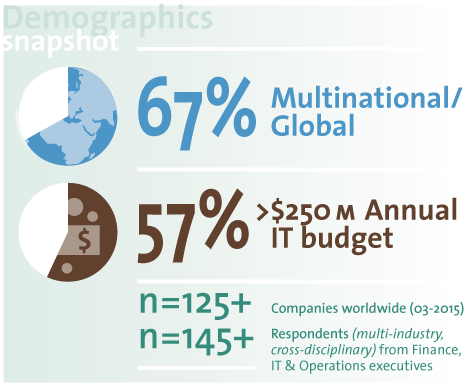
Six Drivers of Successful TBM Outcomes
To achieve these outcomes, organizations perform a number of key processes, develop and deploy TBM-related skills, and use a variety of tools to manage their TBM activities. The survey captures who is responsible for an organization’s TBM initiative and the particular skills the organization’s TBM personnel have. We also capture the types of information that companies collect, the extent to which they define and broadcast the services they provide, and the frequency with which they conduct reviews of their application, infrastructure and service portfolios.
With this robust data set we have been able to do more than just describe the results – we can see how things correlate. We can ask which TBM activities have an impact on important TBM outcomes, such as sustained cost reduction or the ability to articulate the business value of IT. And best of all, we can measure the extent to which TBM activities impact TBM outcomes. This insight illuminates practical steps that companies can take to effectively improve their TBM results.
In what follows, we present the six key findings that emerge from our analysis and recommend concrete action steps for improving TBM outcomes.
Findings and Recommendations
Finding #1: Hold a C-level executive accountable for your TBM initiative to triple the likelihood of successfully controlling IT costs.
TBM is a transformational initiative that requires ownership at the executive level and a close partnership between Finance, IT, and the business. But do not confuse the need for collaboration and coordination on TBM activities with holding a single executive responsible for achieving TBM outcomes.
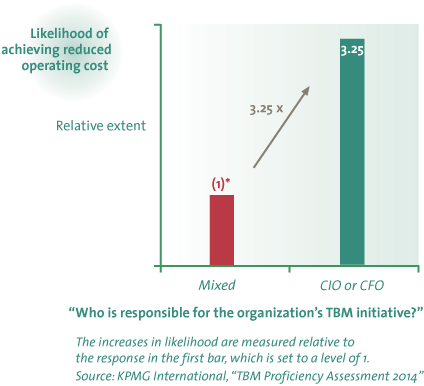
Figure 1. Impact of responsibility for TBM on achieving reduced operating costs.
Figure 1 shows the change in impact on an outcome – achieving reduced operating costs. As we move from “Mixed” responsibility for TBM to “CIO or CFO” responsibility, we see the impact on achieving reduced operating costs change from the baseline level of 1 to the level 3.25. This is the impact that focused, C-level responsibility has on the TBM outcome of achieving reduced IT operating costs. A sustained reduction in IT operating costs gives CIOs the credibility and the opportunity to shift IT investment from initiatives that save money to ones that make money.
If your aim is to achieve repeated success in reducing IT operating costs, put your CIO or CFO in charge of TBM initiatives. If organizational constraints prevent this, devise clear target outcomes for the TBM initiative, monitor progress against these targets, and hold those in your organization who are accountable for achieving these targets responsible for TBM.
Finding #2: Data quality matters, but do not let it stop you from pursuing TBM.
Accurate and readily available IT cost and operational data, such as data in financial and IT asset systems, are the lifeblood of TBM. In our experience over numerous engagements, we find that IT organizations almost never have enough high quality data at the start of the TBM journey. Indeed, improving data quality is a major side benefit of a TBM initiative. How then do companies overcome the data quality problem and get started on TBM?
There are two things that motivate and sustain TBM initiatives despite the lack of data. First, as we see from Figure 2, even moderate improvements in the accuracy and availability of IT cost information can make a big impact on achieving key TBM outcomes. Moving from “Strongly Disagree” to “Disagree” in Figure 2 makes almost a 3x impact on the TBM outcome of achieving cost reduction. And moving from “Disagree” to “Agree” has more than a 3x impact on achieving cost reduction. This is a positive argument for starting on the TBM journey.
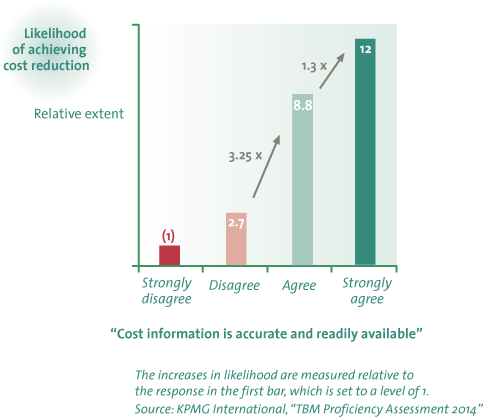
Figure 2. Impact of accurate and available cost information on achieving IT cost reduction.
Second, as TBM success is achieved, there is more motivation to improve data quality and sustain the TBM journey. To ensure a successful TBM journey, embed a data quality improvement initiative within it. Ultimately, TBM is about gaining credibility with business partners, and focusing on data quality improvements is a great way to start and progress through your TBM journey with credibility.
Finding #3: Collecting and maintaining the right data can dramatically improve TBM success.
Given the vast amount of available IT data, what should organizations focus on? Our research reveals that three types of data make a big difference for achieving TBM outcomes: technology (e.g., purchase costs, depreciation), service consumption (e.g., number of logins, number of licenses), and resource utilization information (e.g., storage utilization).
Most organizations already collect technology cost information to some extent. Collecting technology cost information across the board has a large impact on improving the accuracy and availability of this information (Figure 3). We can infer from this that whereas individual cost data elements are accurate, incomplete data results in gaps that makes overall information inaccurate.
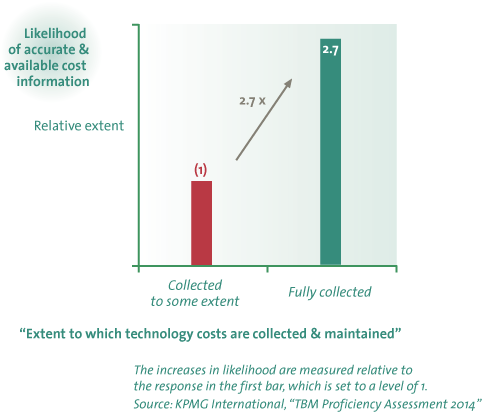
Figure 3. Impact of collecting and maintaining technology costs on accurate and available cost information.
Similarly, collecting and maintaining service consumption information (Figure 4) has a large impact on creating an accurate bill of IT if collected in full.
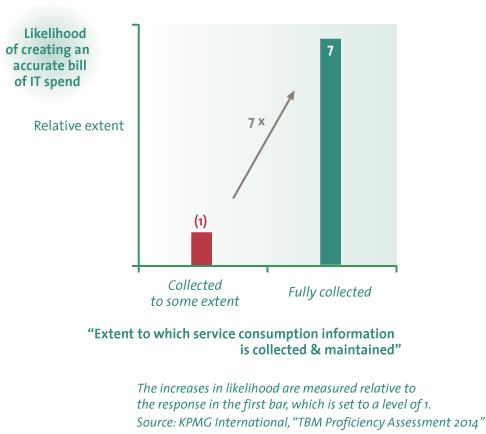
Figure 4. Impact of collecting and maintaining service consumption information on creating an accurate bill of IT.
On the other hand, resource utilization information can make a significant impact on increasing the visibility and insight into IT spending even if it is incomplete (Figure 5).
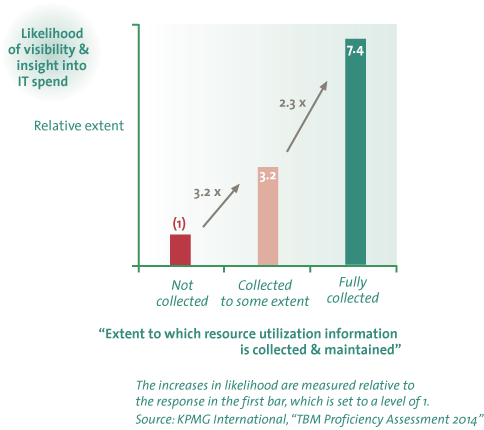
Figure 5. Impact of collecting and maintaining resource utilization information on visibility and insight into IT spend.
The sequence in which companies should progress in their information collection is clear. Begin by collecting at least some resource utilization information. If you have already collected some, increase the scope of its collection. A moderate investment of effort in this area will significantly improve visibility over IT spend. Focus next on collecting technology costs all-over, since this has a significant impact on improving data quality. Finally, improved data quality and visibility into IT spend will make it easier to focus on collecting service consumption information all-round. This in turn will enable IT organizations to significantly improve the accuracy of the bill of IT.
Finding #4: Skills for managing the IT services provided to business partners have a high impact on TBM success.
The IT skill that has the highest impact on a critical element for sustained TBM success – business partners understanding the value that IT brings – is the ability to manage the IT services provided to business partners. This skill is composed of a number of key capabilities: being able to simultaneously speak the language of the business, finance, and technology, the ability to simultaneously make sense of IT cost, quality and performance, and the ability to trace and connect a service all the way from the business layer down to its IT components (Figure 6).
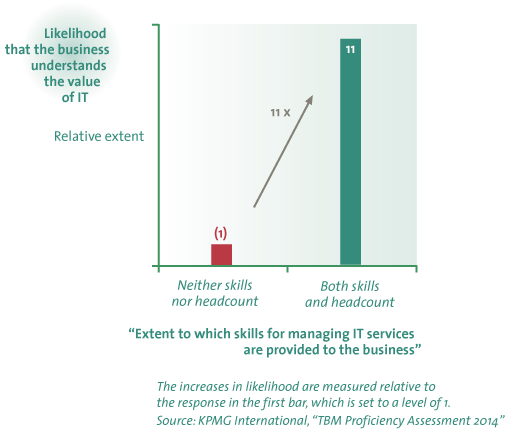
Figure 6. Impact of skills for managing IT services provided to the business on the business partners understanding the value of IT.
In our experience with TBM implementations worldwide, we have seen this set of capabilities as critical to being able to articulate the value of IT in ways that appeal to business partners.
Finding #5: The level of clarity of service offerings has a significant impact on TBM success.
Most technology organizations aim to be world-class service providers. Putting in the relatively small amount of effort it takes to define and make available (publish) a catalog of professional and technology services, IT enables organizations to reap large TBM rewards. Yet, our survey found that 86% of IT organizations fail to do this.
Our analysis shows that even defining and publishing, to some extent, a list of professional services (e.g., consulting, training) significantly improves – by a factor of 3.5 – the accuracy and availability of cost information – an essential ingredient for TBM success (Figure 7). The same goes for defining and publishing a list of technology services (e.g., compute, network): 58% of IT organizations do not do this and once again, even a moderate improvement enhances visibility and insight into IT spend by a factor of 2.5 (Figure 8).
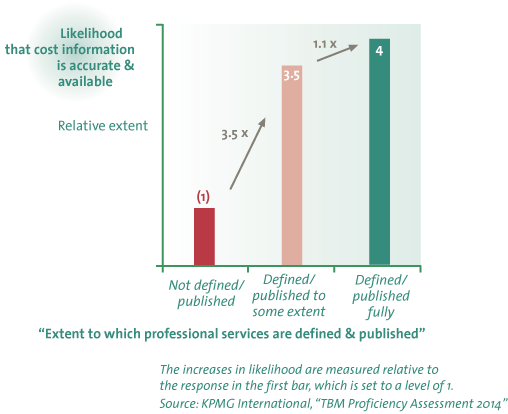
Figure 7. Impact of defining and publishing professional services provided on the accuracy and availability of cost information.
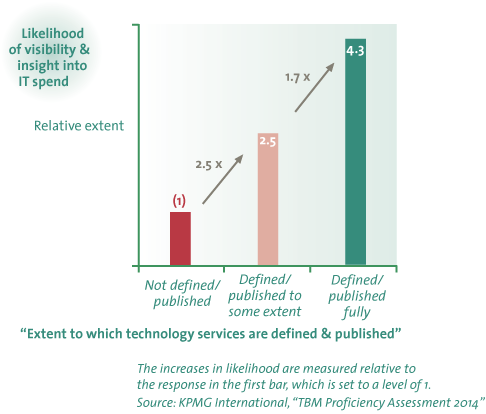
Figure 8. Impact of defining and publishing technology services on visibility and insight into IT spend.
Clearly articulating the technology and professional services provided by the IT organization is one of the easiest ways to demonstrate the value that IT brings to the business.
Finding #6: Move from ad hoc to periodic reviews of vendor/supplier portfolios.
Moving away from ad hoc to periodic reviews of application and vendor/supplier portfolios can greatly improve the likelihood of achieving TBM success. Periodic reviews of contractual performance and supplier risk, along with vendor incentives for value-add behavior, can increase the likelihood of creating an accurate bill of IT by over eight times (Figure 9) while periodic application portfolio reviews can increase the likelihood of visibility and insight into IT spend almost four times (Figure 10).
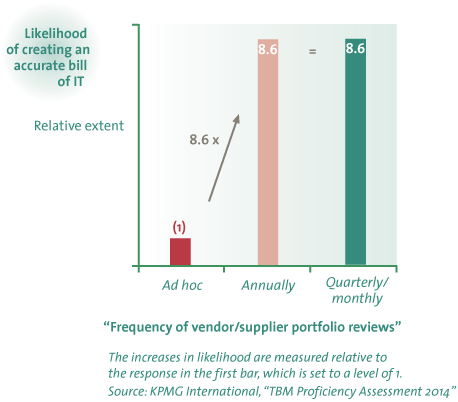
Figure 9. Impact of frequency of vendor/supplier portfolio reviews on creating an accurate bill of IT.
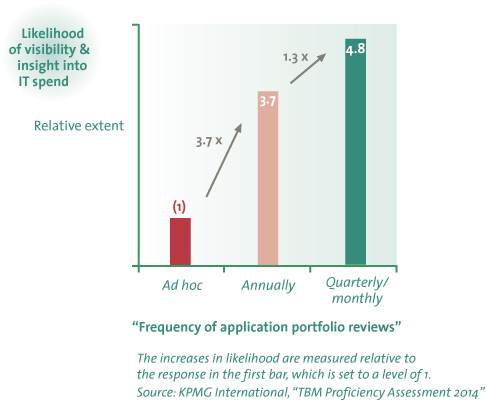
Figure 10. Impact of frequency of application portfolio reviews on visibility and insight into IT spend.
Regularly monitoring your vendor and supplier portfolio costs, consumption and performance, can help you achieve an agile operating model that responds to changing business needs. By actively monitoring cost, consumption and performance, you can stay on top of how your contractual obligations are meeting your business needs. By setting up more agile contracts, you can use and pay for only the service levels you use. And rewarding innovative behavior, not just managing compliance, can lead to better outcomes.
Conclusion
Our analysis of over 145 survey responses from companies around the world points to key ways in which IT organizations can effectively improve their TBM proficiency and achieve more success in their TBM initiatives. We summarize our findings and recommendations in the following six points.
- TBM requires executive-level ownership. Do not push ownership down below the C-level.
- TBM is built on credibility. Credibility is founded in data quality. Embed a data quality initiative into your TBM program right from the very start.
- In the universe of data, there are three things you must collect and maintain: cost, utilization, and service consumption information. You need all three to get a complete picture of IT cost and value.
- There are specific skills that you must be good at to succeed in TBM (see the capabilities above). These are the skills that go into managing the services provided to business partners.
- All technology organizations aim to be world-class service providers. Articulating the services you provide in a way that is clear and easy for the business to understand is a game changer! It is better to give business partners 4 things to choose from rather than 400.
- Regularly monitor the cost, consumption and performance of your vendor/supplier portfolio as the foundation of an agile operating model.



